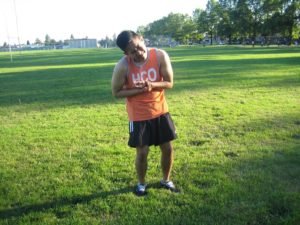The thumb is built with a loose joint mechanism that provides it with a wide range of mobility. As a result, it makes it vulnerable to various injuries. Due to the closeness of the muscles, tendons and ligaments, identifying a strain or sprain can be hard. It is important to note that a sprain involves damaged ligaments while a strain refers to wounded tendons. The injuries frequently occur from a crushing trauma, direct blow to the upper part, repetitive or twisting movements involving in gripping or using a computer mouse.
Tendons in the thumb
The thumb is comprised of eight muscles – four inside the hand and four connecting the forearm into the bones of the thumb. This will allow enough power for pinching and gripping. The pain at the base of the thumb is a commonly experienced symptom that develops with these activities. As the pinch strength of the individual reduces, he/she can experience clicking or catching with various movements due to the instability of the tendon or joint when shifting under tension.

Repetitive motion disorders
The repetitive motion disorders are soft tissue conditions that develop due to repeated movements that are performed during daily activities or work. These are often caused by too much continuous repetitions of a movement or activity. The tendons in the thumb are susceptible to these conditions, particularly when using a computer mouse. Injuries often develop since the tissues being irritated does not have enough time to recover since it is being used again.
Tenosynovitis
The tendons have a protective sheath of tissue that surrounds them. Inside this sheath is the lining known as the synovium which produces the synovial fluid. Due to repetitive use or infection, the sheath becomes inflamed, resulting to tension on the tendon or pain during movement. The tendons can recover but if left untreated, they can rupture or cause permanent damage. After an injury, strengthening exercises and proper body mechanics are required to avoid re-injury.
De Quervain’s tendonitis
De Quervain’s tendonitis is a condition that develops due to the inflammation or irritation of the wrist tendons at the base of the thumb. The inflammation causes the compartment comprised of the sheath around the tendon to inflame and enlarge, making the thumb and wrist movement sore. The pain can either be gradual or abrupt.
Preventive and solution
Injured tendons can recover with rest, application of an ice pack and anti-inflammatory medications. Taping or splinting might be required to protect the thumb and support the tendons. The moment the swelling, inflammation and pain have reduced; mild strengthening exercises can be started. Just remember that exercise should not trigger any pain. By enrolling in a course on first aid today, you can easily manage this condition.
If the individual resumes repetitive activities, he/she should be monitored in order to avoid aggravating the tendons. A supportive brace for the thumb might be required on an intermittent basis to help establish endurance.
